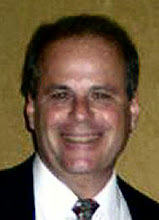In preparation for my online participation in a Bialystok, Poland exhibition beginning September 4, I have completed a Polish language version of the exhibition.
The English language version of the exhibition has been part of the Museum's content for some time now as part of its "Great Artists Series," which is designed to honor those Jewish artists "whose contributions to the world were extraordinary in terms of both the scope and quality of their work." Max Weber, a native of Bialystok, was one such artist.
Now for some background on Max Weber.
Max Weber (1881-1961) is one of America’s most important twentieth century artists. The first American cubist, Weber translated the modern European aesthetic into a truly American style that evolved during the roughly sixty years of his career. He developed a personal expressionism in his mature phase that was influential for the development of Abstract Expressionism.
Weber was raised in an Orthodox home. In 1891 when he was ten years old, he immigrated to the United States with his mother and elder brother. In New York they were reunited with his father, who was a tailor. The Webers settled in the Williamsburg section of Brooklyn, New York, which was at the time, a haven for Eastern European Jewish immigrants.
After the death of his parents in 1918 at the end of World War I, Weber briefly turned away from modern art as so many artists were doing. During the twenties he returned to more familiar imagery and began his exploration of Judaic themes. During the thirties Weber’s political views compelled him to address more socially conscious themes. At the end of his career, he returned to the abstraction that had dominated his initial mature work.
..............................................................................................
Weber’s inspiration for one of his more well-known Judaic works, "The Talmudists," was recorded in the 1935 article, Max Weber: Hasidic Painter, in Judaism, a quarterly journal published by the American Jewish Congress:
"I was prompted to paint this picture after a pilgrimage to one of the oldest synagogues of New York's East Side. I find a living spiritual beauty emanates from, and over and about a group of patriarchal types when they congregate in search of wisdom in the teaching of the great Talmudists of the past. The discussion of the Talmud is at times impassioned, inspired, ecstatic, and at other moments serene and contemplative…to witness a group of such elders bent on and intent upon nothing but the eternal quest and interpretation of the ethical, significant, and religious content of the great Jewish legacy--the Torah--is for me an unforgettable experience.”
..............................................................................................
To see the entire exhibition (in English), which is entitled "Max Weber: Reflections of Jewish Memory in Modern American Art," use www.museumoffamilyhistory.com/mweber-01.htm.
If you're a Polish speaker or are just curious and would like to compare both versions, feel free to do so. You can find the Polish language version at www.museumoffamilyhistory.com/mweber-01p.htm.
Subscribe to:
Post Comments (Atom)




No comments:
Post a Comment